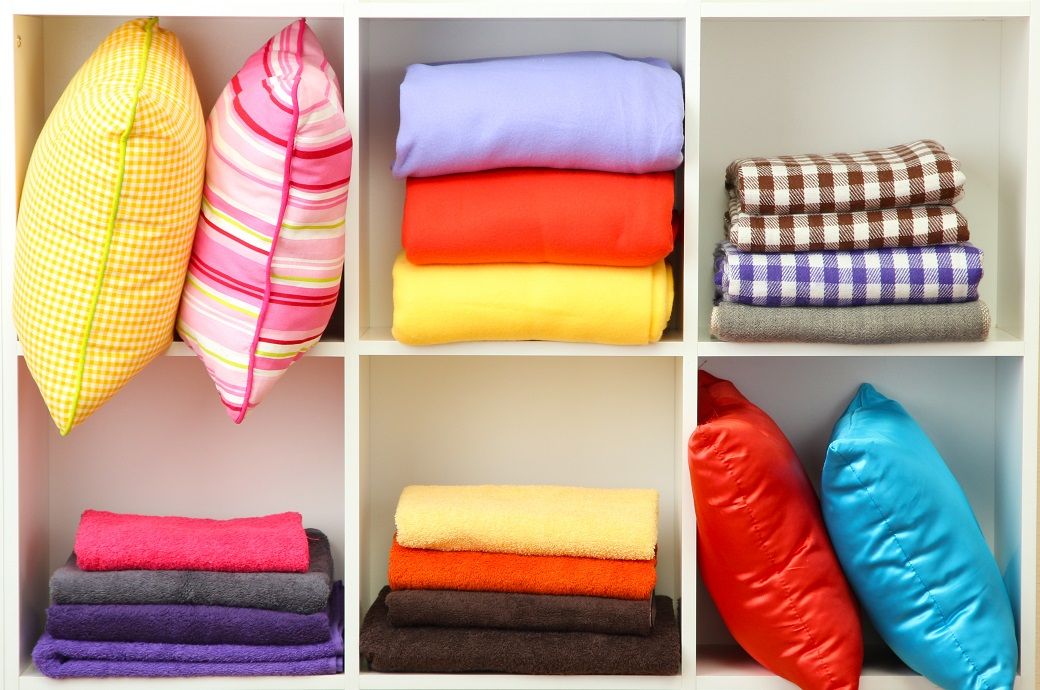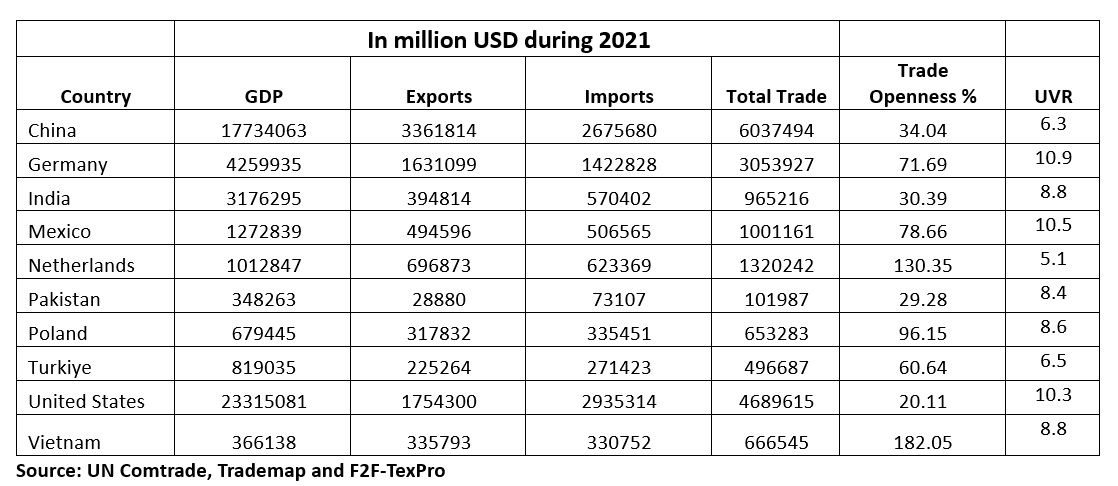
Trade openness is defined by the degree to which a nation engages in international trade, allowing the flow of goods and services across geographical borders. The UVR, a measure indicating the average price of a product in international trade transactions, is used as a benchmark for home textiles products priced as USD/kg.

The study titled ‘Strategic Global Home Textiles Sourcing Report’ examined the top 10 globally traded home textile products and the trade openness of the top 10 trading countries. Findings suggest that increased trade openness intensifies global market competition. As countries become more open to international trade, domestic producers often face stiff competition from foreign firms, pushing down prices and impacting UVR.
The correlation coefficient was found to be -0.4, establishing an inverse relationship. This means that countries with more open economies, such as the Netherlands and Vietnam, tend to have lower UVR compared to more restrictive economies.
Trade openness helps countries determine their areas of specialisation, leading to more efficient production and potentially achieving economies of scale. This results in lower per unit cost of production and increased productivity, all of which influence the UVR.
However, the study also noted that trade openness is not the only determining factor for lower UVRs. Other factors, such as labour costs, energy costs, resource endowments, productivity, and technology, also significantly affect UVR determination. Furthermore, the quality and differentiation of the products can also impact the UVR, with more open markets encouraging product differentiation through innovation and improved quality.
Fibre2Fashion News Desk (MI - WE)